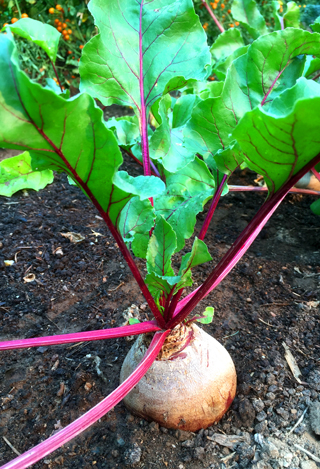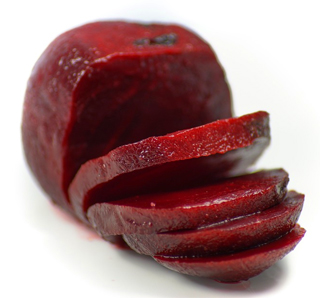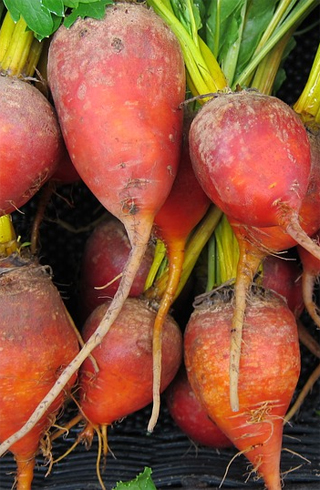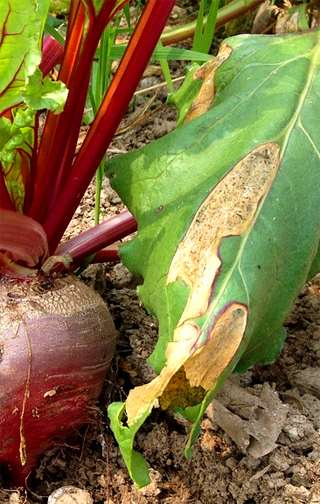
How to Grow the Best Beets in Oregon, Washington and British Columbia
Beets (Beta vulgaris) originated in the eastern Mediterranean countries and are now popular in both the UK and America. The plant produces a fleshy root its first year and, if left to overwinter, a seed-stalk the second year. Both the green tops and the roots can be eaten. Beets are very hardy and are a Northwest gardener’s favorite for producing a lot of food in a small area.
There are three basic types of beets:
Mangels are tough and hearty and grown mostly for stock feed. They are especially good as winter chicken feed.
Sugar beets are large and coarse and have higher sugar content than the other two types. They are, of course, the source of the common sweetener, beet sugar.
Garden beets can be long and tapering or round like a turnip. They are usually deep red, but also come in gold and white types.
Beets and Your Health
- Beets are jam-packed with vitamins A and C as well as being a good source of potassium and calcium. They are low in calories and high in antioxidants, folate and other B-vitamins.
- Beets are super heart-healthy with a high content of the plaque-fighting nutrient glycine betaine.
- Beet greens are high in antioxidants, carotenoids, flavanoids, and vitamin A.
- Beets are also a unique source of phytonutrients called betalains and have been shown to provide antioxidant, anti-inflammatory, and detoxification support.
- Beets contain powerful compounds that help protect against heart disease, birth defects and certain cancers, especially colon cancer.
- Just one cup of beets provides 34% of the recommended daily amount of folate and 28% of manganese.
- Beets are so high in nutrients they made this list of the One Hundred Healthiest Foods.
Seasonal To-do List
Early spring:
- If desired, start seeds indoors in flats 3-4 weeks before ground is tillable.
- Prepare beds, adding compost and fertilizer as needed.
- Beets are very frost-hardy, so begin successive plantings as soon as ground can be worked.
Spring:
- Begin harvest of thinning and beet greens.
- Continue successive sowings every two to three weeks through June or early July.
Summer:
- Continue sowing until heat stops germination.
- Harvest beet tops and first-sown roots.
Fall:
- Harvest roots and greens.
- In warmer climes, you can sow a fall crop as the weather cools. Cover fall crop with cloches.
Winter:
- Protect over-wintering crops by clipping tops and covering with straw or grass clippings.
Location
Although a sunny spot is necessary, too much heat will give the roots a woody texture. Make sure that the location is well-drained. A raised or semi-raised bed works well and can more easily be shaded in hot weather.
Soil Preparation
Beets thrive in almost any soil, but will do best in slightly sandy loam. The beet’s deep tap-root likes deep, well-worked soil. All root crops are sensitive to compacted soil so raised beds are a must in heavy clay soil. Dig in well-rotted compost or manure, being careful not to leave any lumps which can cause root deformities. A commercial organic 5-10-10 fertilizer will also work well. Beets prefer slightly alkaline soil so an extra application of lime won’t hurt.
If soil is ultra-rich beets, like other root crops, will make larger tops and smaller roots so there’s no need to apply high amounts of fertilizer.
If you like, test soil for nutrients: lack of potash will result in large tops and small roots. Hardwood ashes are a good source of potash. Also, mix in lime to 2” deep.
Planting
Sow seeds ½ inch deep and 1” apart in rows 12”-16” apart. Cover and water gently.
Beets also do well in “square-foot” or intensely planted row-less beds.
You can also interplant with fast-growing radishes which will lessen the need for thinning, as the radishes are pulled first. Otherwise, thin beets to 2” apart when tops are 3”-4” tall, using the thinning in salads.
When growing beets for canning, plant more thickly and thin them less closely to keep beets smaller.
Water
Keep beets moist for best roots. Water regularly, especially in dry weather. Slow-growing, drought-afflicted beets will be tough and woody. Straw mulch between rows will help retain moisture.
Harvest
Greens are best when young and tender. Harvest roots when golf ball size and larger. For canning, beets 1”-2” in diameter are best. Store with tops cut off in cool area packed in sand or loose in baskets.
Pests and Diseases
Beets are not prone to many afflictions and most can be controlled through crop rotation. Slugs can be hand-picked, trapped or controlled with iron phosphate (pet and wildlife safe) baits. Gophers and moles can be trapped or kept out with an underground screen placed prior to planting.
Leaf miners are best controlled with floating row covers but if the most heavily infested leaves are removed the you can usually keep damage at an acceptable level.




